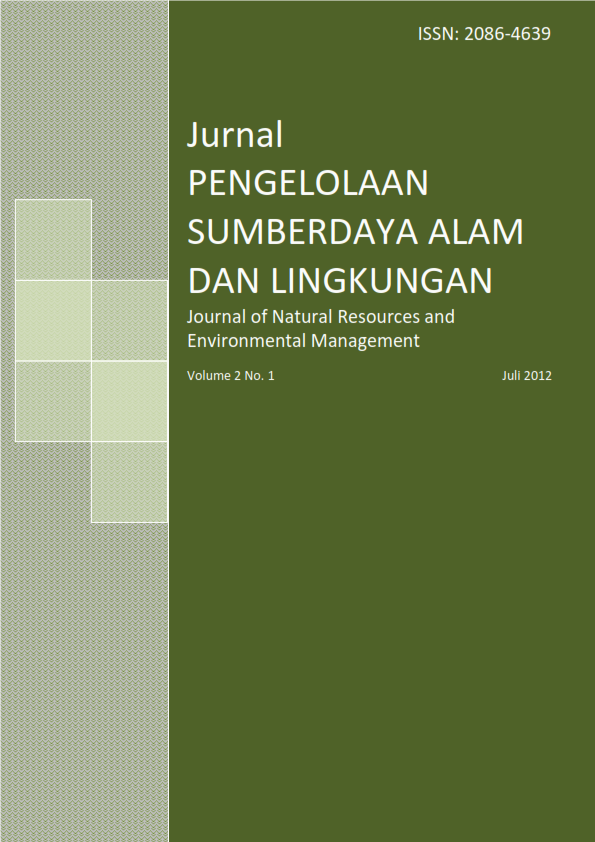MODEL PENGENDALIAN PENCEMARAN LAUT UNTUK MENINGKATKAN DAYA DUKUNG LINGKUNGAN TELUK JAKARTA
Abstract
Jakarta Bay is important in coastal management for ecological and economical approach. Another case, it’s also as a river estuary area. Many rivers pass Jakarta Capital City, Bogor, Tangerang and Bekasi areas. The objective of this research were conducted to identify kind of source contamination, assimilation capacities of Jakarta Bay, important elements for contamination effect, and then to construct Sea Contamination Control model, for management policy instruction to prevent Jakarta Bay contamination. This research was operated from Agustus 2005 until April 2006. The analysis of this research used the system approach (dynamic system model). The contamination sources of this area were domestic waste, industrial disposal and waste of market. This contamination levels have an exceeded assimilation capacities: TDS is equal to 2 313 609.07 ton/month, PO4 is equal to 518.85 ton/month, SO4 is equal to 141 610.11 ton/month, MBAS is equal to 441.87 ton/month, KMnO4 is equal to 23 785.43 ton/month, BOD is equal to 16 369.05 ton/month, dan COD is equal to 52 983.15 ton/month. The interpretative structural modelling (ISM) indicated that there are five primary factors, namely law enforcement, good cooperation of stakeholders, good relation of area management, good compromise of need assessment, vision, target and mission to managing the environment.
Keywords: assimilation capacities, contamination, dynamic system model, jakarta bay
Authors
Authors who publish with this journal agree to the following terms:
- Authors retain copyright and grant the journal right of first publication with the work simultaneously licensed under a Creative Commons Attribution License that allows others to share the work with an acknowledgement of the work's authorship and initial publication in this journal.
- Authors are able to enter into separate, additional contractual arrangements for the non-exclusive distribution of the journal's published version of the work (e.g., post it to an institutional repository or publish it in a book), with an acknowledgement of its initial publication in this journal.
- Authors are permitted and encouraged to post their work online (e.g., in institutional repositories or on their website) prior to and during the submission process, as it can lead to productive exchanges, as well as earlier and greater citation of published work (See The Effect of Open Access).






